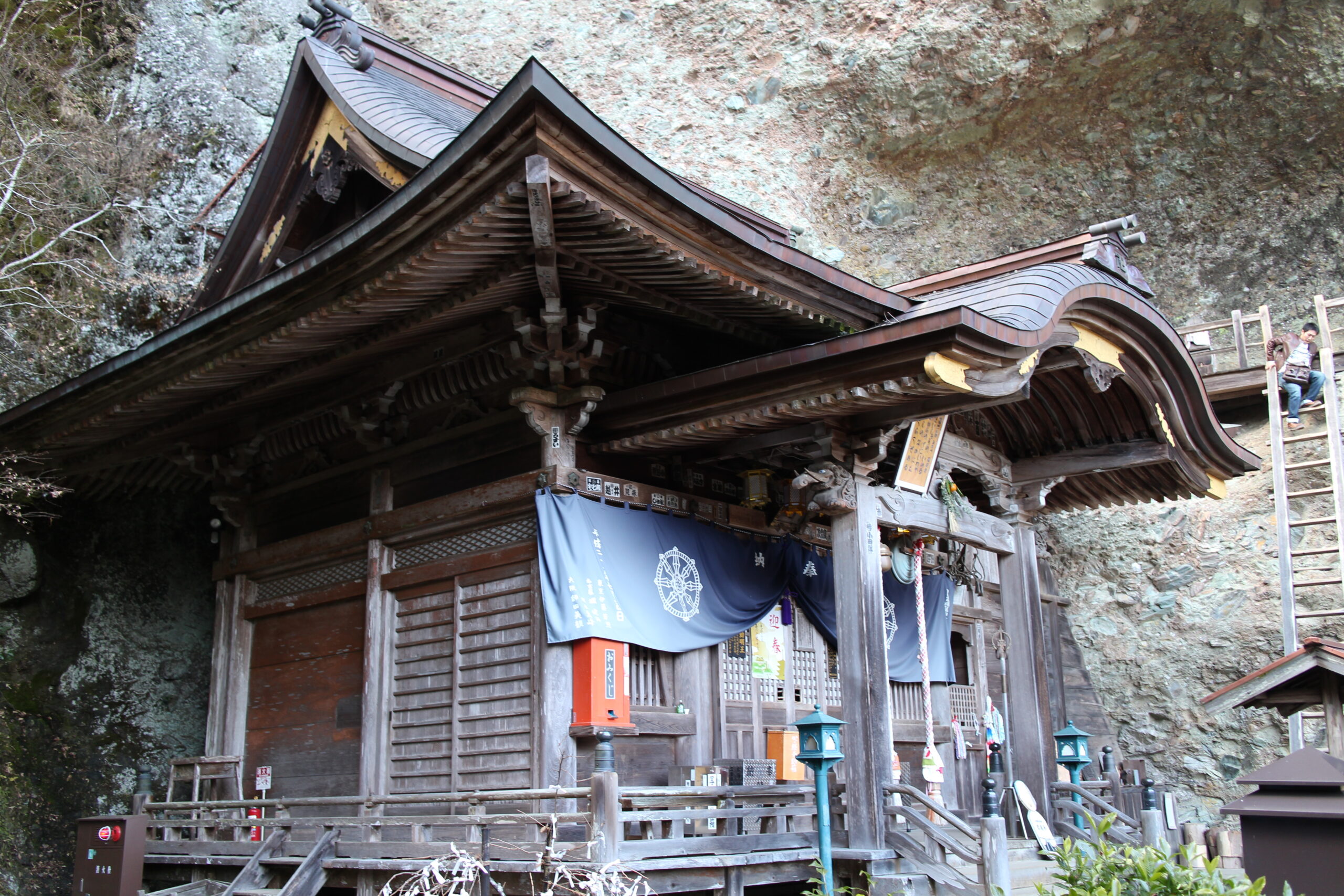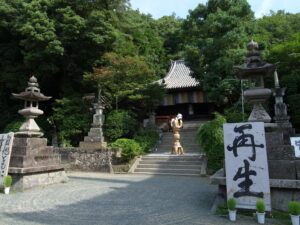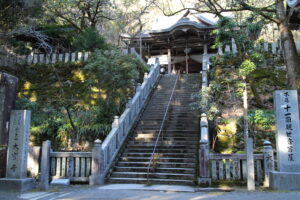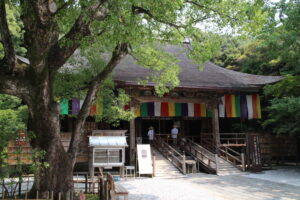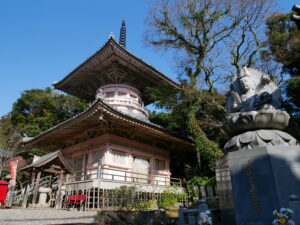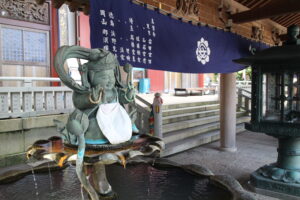Clinging to cave-pocked cliffs high in the Kuma Mountains, Iwaya-ji has since antiquity been one of the Henro’s most idyllic and imposing sacred sites.
Origins and History of Iwaya-ji
Iwaya-ji is situated among mudstone cliffs that soar 700 meters above sea level in Ehime’s Kuma region. The cliffs were carved out by natural forces over 20 million years. Kukai is said to have visited the area in 815, and there encountered a female called Hoke the Immortal dwelling among the crags. Hoke, a native of Kochi, had mastered the teachings of the Lotus Sutra (Hoke-kyo), enabling her to fly through the sky like a bird. Even so, Hoke was deeply impressed by Kukai’s skill in esoteric Buddhism, and offered the mountain to the great saint as a place of practice. Kukai carved two images of the fearsome protector Fudo, one of wood and one of stone. The wooden one he enshrined as the main image in a small hall, and the stone one he installed deep in one of the mountain’s caves, transforming the entire mountain into a manifestation of Fudo. This legend provides us with valuable hints about the mountain’s origins as a place of ascetic practice where indigenous mountain worship and esoteric Buddhism were combined.In the 13th century, the holy man and Ehime native Ippen undertook austerities here, and his illustrated biography, the Ippen Shonin Eden, provides precious insights into the state of the temple in medieval times. For more information on Ippen, see this article on Buddhism Guide.The vast majority of the temple’s buildings and artifacts were lost to fire in the late 19th century, and the current buildings on the ground largely date from the last 100 years.
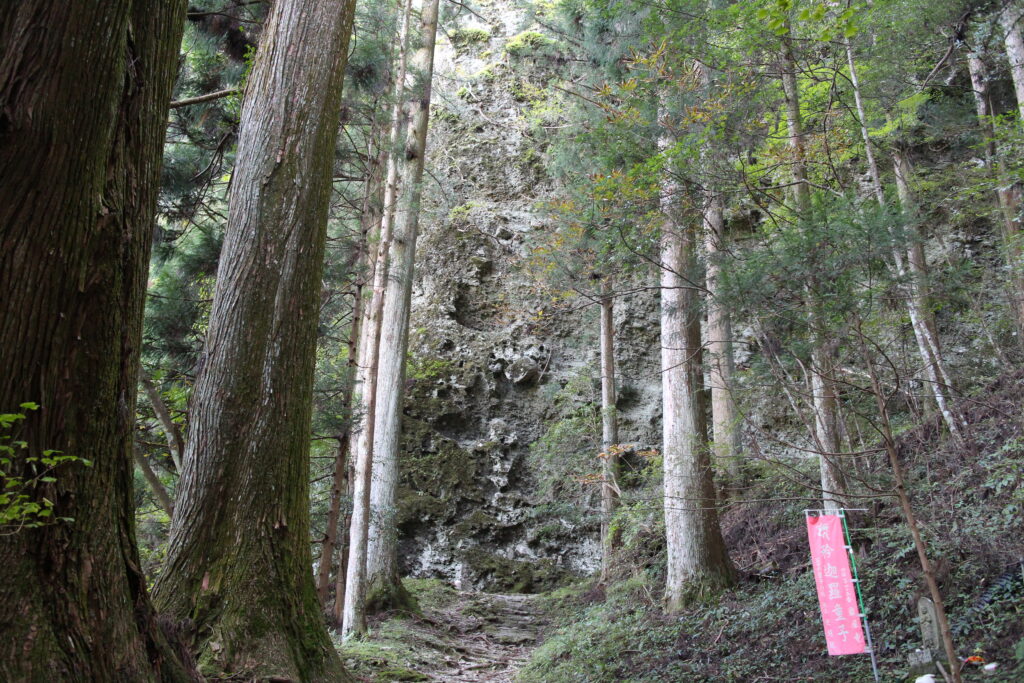
What to See at Iwaya-ji
Iwaya-ji is a well known challenge for pilgrims who travel by foot and by car alike; walking pilgrims have 13km through mountains and valleys to tackle between Temples 44 and 45, and car or bus pilgrims have the daunting climb from the Chokuse River Valley up to the temple. The walking trail approaches the mountain from above, and the last section passes by a miniature pilgrimage of 36 Doji, impish messengers of Fudo, the mountain’s fearsome main deity. The centerpiece of this pilgrimage is a stone Fudo enshrined beside a titanic crack in the cliffs called the Seriwari Zenjo, or the “Meditation of the Fissure.” Ascetics past and present climb chains and ladders through this crack to the top of the mountain as a way of purifying body and mind.Descending toward the temple takes you through what is technically the main gate, though the development of the path from the parking lot has meant few pilgrims enter by this route. The gate is one of a few buildings that survived the 19th century fire, and dates from 1790.Past the main gate is the impressive Daishi Hall, one of several on the pilgrimage that dwarf their temple’s main hall in size. The building, completed in 1920, tastefully incorporates Art Deco motifs alongside its traditional construction. Past the Daishi hall is the main hall, built tight against the cliffs to reflect the fact that the entire mountain is an embodiment of the temple’s main image, Fudo. Beside the main hall is a wooden ladder where brave pilgrims can climb up to a large hole in the rock where past practitioners meditated among the elements.Down the stairs from the main hall is the Ana Zenjo, the “Meditation of the Cave,” a 10-meter-long cavern where Kukai and other past practitioners isolated themselves for focused practice. At the end of the cave are statues of Fudo, Jizo, and Kobo Daishi Kukai.The pilgrim trail continues down the mountain on the same path that climbs up from the parking lot. The trail is lined with hundreds of statues of Jizo and other deities, donated by devotees of the temple for petitions such as safe childbirth or honoring a deceased loved one.For more information on Iwaya-ji, check out the temple’s website.

An Unforgettable Adventure, Well Worth the Climb
Whether you come for the breathtaking scenery, the legends of immortal sages, or the quiet challenge of the trail, Iwaya-ji rewards every traveler with its awe-inspiring and austere atmosphere. Its blend of myth, nature, and living Buddhist tradition makes it one of the Henro’s most memorable sites. With Shikoku Tours, you’ll gain meaningful insight and guidance—no matter your path through the pilgrimage.

